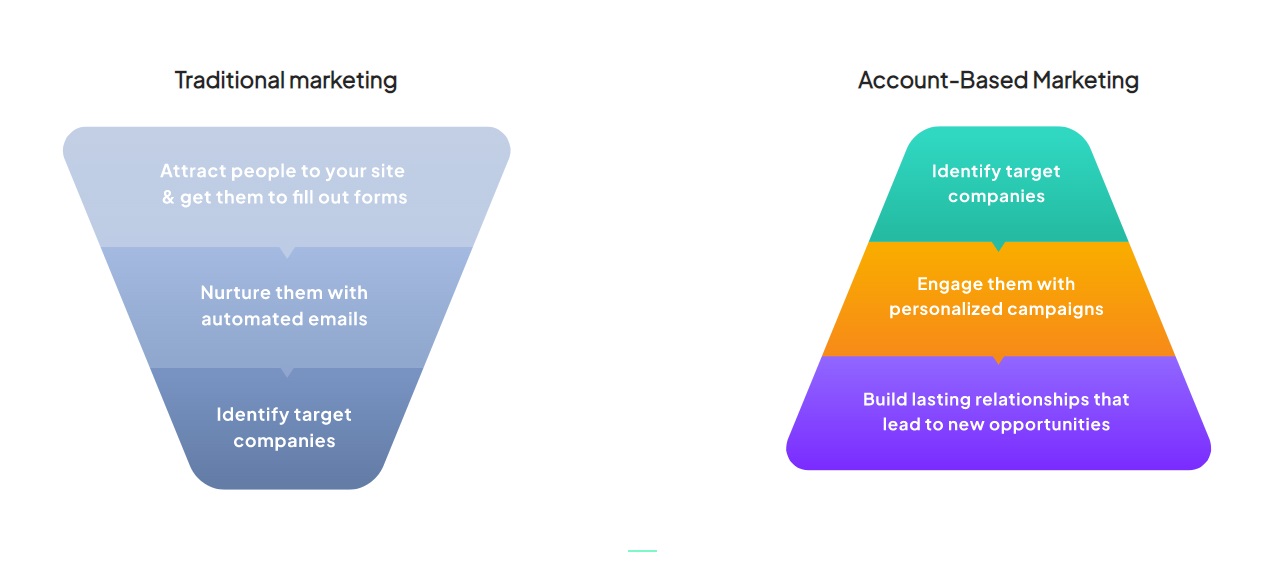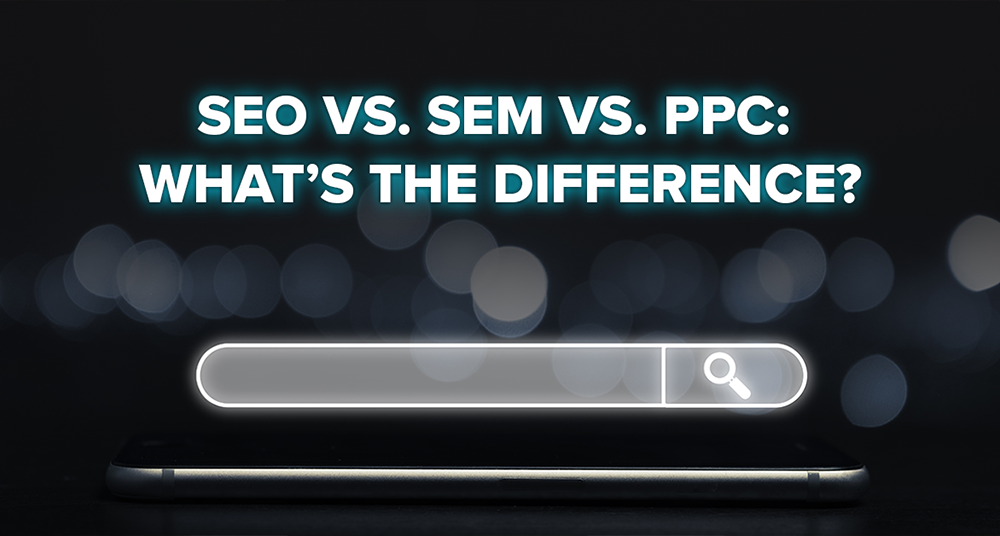If there’s anything the pandemic and post-pandemic period have thought us, that’s to value and not waste our resources – whether human or financial – or our time, for that matter.
It does not mean being frugal, but maximizing what you get from the resources you’ve invested. Talk about efficiency, right?
And yes, that goes for marketing too.
Imagine you can skip the part when you’re wasting time trying to market to many leads who aren’t the right fit for your business and go straight to selling directly to your best-fit prospects that will bring value to your organization.
Imagine you can laser-focus your efforts on the critical processes of attracting, nurturing, and selling to the highest-value accounts that are the perfect fit for your products by treating them as if they’re individual markets.
That is where account-based marketing (ABM) steps under the lights…again.
Let me assure you, this is not just another digital marketing buzzword. Because this isn’t a new, but a decade-old strategy that is surging again as relevant data becomes more accessible and technologies to target key accounts improve.
What is account-based marketing?
A B2B marketing strategy, account-based marketing (ABM) is a strategic approach to sales and marketing that aims toward specific companies instead of large groups as a whole by using highly personalized communication.
A very effective strategy, it recognizes that B2B purchase decisions are often made by a group of individuals within the company, but requires meeting several important criteria, such as minimum deal size, green light from key decision makers, and available resources.
This approach is enabled by ABM tools that automate many of the data and workflow processes.
ABM allows you to weed out less-valuable companies early on and ensure marketing and sales are in complete alignment to deliver targeted advertising – that has always performed better than generic, non-targeted campaigns – as well as personalized content and messaging, to high-value accounts.
By personalizing your targeted clients’ journey and tailoring all communications, content, and marketing campaigns to their specific accounts, you’ll not only see greater ROI but also a boost in customer loyalty.
However, it requires a new, different way of thinking.
From ‘Spray and Pray’ to ‘Land and Expand’
Instead of using the ‘spray and pray’ marketing approach, sending mass marketing generic messages to prospects and customers and hoping that they resonate with a small percentage of them which will eventually become customers – something all marketers are ‘guilty’ of – ABM starts at the other end of the traditional marketing funnel i.e. from the bottom.
Put simply, it takes the funnel and flips it upside down!

ABM targets specific companies rather than launching a broad marketing campaign that attracts thousands of prospects to nurture only the few that express their interest and then build on that by developing niche content to move ideal prospects through the funnel.
If marketing was fishing, you’d be the one with a fishing rod and a specific type of bait you know your ideal fish loves instead of relying on a fishing net that will catch whatever is in your path.
With ABM, you basically define the top specific company accounts you want to target, you find out what they are really concerned about or interested in and then you develop content that addresses that pain point or subject of interest and put in place a marketing campaign that speaks specifically to them – so, zero wasted marketing budget and better automated efficiency than a human sales team.
This is a particularly suitable approach for B2B companies with less complex products that don’t require in-person selling.
You start with your target accounts – specific companies – and then work your way backward to target and engage with the key decision-makers at those companies with personalized content and campaigns to lay the foundation for that potential relationship to open up new sales opportunities in the future – also known as “land and expand”.
What does it take to succeed?
The first step before you begin to develop a successful ABM strategy should be to identify who your target companies are – key to this process is that these companies fit your client business’ Ideal Customer Profile (ICP), the type of business that typically gets the most use out of your product.
This profile is usually developed using machine learning-based predictive analytics and should consider many relevant data such as the industry/vertical, size – both employee number and annual revenue – budget, geography, and technology used.
Many other factors go into choosing targeted accounts, including whether the targeted account is growing or in a growth-oriented market and the history with that business since your current customer pool is the first to sift through.
When you identify and compile your list of prospects, start tiering them by using the company website as well as LinkedIn– LinkedIn’s Sales Navigator can be extremely useful here – to locate contact points.
Next in the process is to identify the important players in the buying process within a prospect – B2B purchases can involve dozens of people within an organization- and create personalized messaging for them.
Account-based marketing technologies’ success lays in engaging clients on their terms using digital channels other than email and phone calls, and can also easily be done at scale.

Messaging should appeal to each player’s individual needs so marketers should tailor it by focusing on different business problems that different departments and roles within the organization have.
The message you’ll send to an engineer, for example, would focus more on technical problems whereas the message to an upper-level executive – marketing manager or HR executive assistant might be perfect since CEO might not be a great target as they are likely busy- may focus on business outcomes.
All of this would be impossible without a multichannel approach and close alignment between sales, marketing, and customer success teams since what your client needs is a seamless transition through the customer experience: from being acquired as a lead through the final sale.
Key benefits of account-based marketing
The hyper-personal approach of ABM offers several benefits by allowing you to reach the right people at the right companies: from little to no waste in your marketing budget, a higher average contract value and better deal sizes, increased sales, and overall ROI, to maximizing your relevance among client accounts.
The fact that – as research conducted by SiriusDecisions shows – 92% of B2B companies consider ABM as extremely/very important to their marketing efforts, almost 87% of marketers say AMB delivers them higher ROI, and that 40% of companies plan to grow their ABM efforts a lot in the coming years demonstrate that the strategy simply works!
On top of the higher efficiency, AMB helps you, among other things, to
– build trust in your brand by showing prospects you actually understand what they need
– increase the retention of existing customers by ultimately offering them a consistent experience with your brand and a long-term sense of delight
– boost the sales process (most companies that use ABM have sales cycles shorter than 90 days)
– the personalization and customization of everything (content, product information, communications, and campaigns) for each account maximize your relevance among these accounts by showing them how your specific products/services are what they need to solve their challenges.
Final thoughts
Although the account-based marketing strategy might be most effective for enterprise clients and targets companies as a whole, remember that your ultimate targets are not companies or metrics, but people.
With so many tools to use and so much information available to access while preparing your ABM strategy, don’t let the humans get lost in the data.

We’re all still people selling to other people whether your target audience is a B2B employee or a consumer in a retail store, so the goal is to create as personal as possible relationships with key stakeholders and decision-makers.
And not only that.
Since ABM allows you to angle your business to make it the most relevant and ideal option for your target clients, each client should feel as though they’re your business’s market of one.
Your relationship-building efforts will be more authentic and effective if you connect all the dots and create a holistic view of each person on your target accounts list, keeping in mind to focus on the individuals influential in the purchase decision in real time.
And remember. Your campaign may only lead to one download or sign-up but that’s all you need if it’s the right sign-up. And that’s the essence of account-based marketing.


